Visiting South Korea and need a break from the hustle and bustle of the city? Take a break and try visiting the DMZ. Nestled between North and South Korea, divided by decades of conflict and tension lies one of the world’s most intriguing and historically significant landscapes: the Demilitarized Zone (DMZ).
Stepping foot into the DMZ is akin to stepping into a time capsule, where the echoes of history reverberate through the barren landscape. This is a rare insight that you can only experience in this area of the world.
Trevorocity is reader-supported. When you buy through links on this site, we may earn an affiliate commission.
What is the DMZ
The Demilitarized Zone (DMZ) stands as a unique geopolitical phenomenon, symbolizing the enduring division between North and South Korea. Established in 1953 as part of the Korean Armistice Agreement that halted the Korean War, the DMZ stretches approximately 250 kilometers across the Korean Peninsula, serving as a buffer zone between the two nations. This is a war that has not been won, but rather is a stalemate.
Despite its name, the DMZ is far from devoid of military presence. In fact, it is one of the most heavily fortified borders in the world, bristling with fences, guard posts, landmines, and an array of surveillance technologies. This fortified strip of land, measuring about 4 kilometers wide, effectively acts as a no-man’s-land.
When to Visit the DMZ
The DMZ is open year round, so you can visit almost at any time. The DMZ remains closed every Monday, on National Holidays, and during any scheduled military training exercises. It is open year round, even including the winter months. Winter months means fewer visitors, but the frigid temperatures can be a turn off for many. I recommend trying to visit in the spring, or fall when temperatures are still cool, but it is warm enough to be outside all day.
What will You See when Visiting the DMZ
While visiting the DMZ you will have three areas that you will get out of the bus and be able to tour. First, the Third Tunnel of Aggression where you will spend about 70 minutes. The second is the Dora Observatory where you will spend about 40 minutes. Lastly, you will visit Tongilchon-gil for about 15 minutes.
Third Tunnel of Aggression
Discovered in 1978, this clandestine passageway serves as a chilling testament to the ongoing tensions and military provocations between North and South Korea. North Korea designed the tunnel, stretching over 1,600 meters in length and situated 73 meters below the surface, as part of a covert infiltration strategy aimed at launching surprise attacks on South Korea’s capital, Seoul.
Today, the Third Tunnel of Aggression has undergone a transformation into a memorial and educational site. Upon arrival, visitors are immersed in a short video narrating the history of the site and the remarkable discovery of additional tunnels, including the one they are about to explore. One of the most interesting facts is that North Korea tried to state that they were just looking for coal in this tunnel. A fact, which is untrue as coal is not possible to be found in this region.
Visitors to the DMZ even have the chance to walk down into the tunnel. Be careful as it is steep! Walking in the tunnel you will still be able to see the blast holes on the ceiling. At the end of the tunnel there is a concrete wall that has a small window that views deeper into the tunnel. Sadly phones and cameras are not allowed to be taken into the tunnel. There are small lockers at the top to store all valuables.
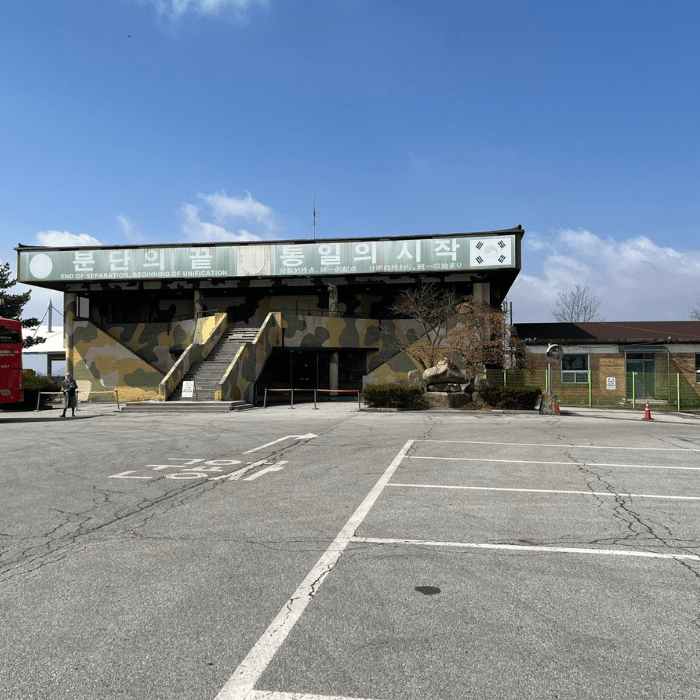
Dora Observatory
The second spot that the buses will stop is the Dora Observatory, giving you a greater glimpse into life of North Korea. While the original observatory has been closed a new and more modern one has replaced it. This new one even includes a small coffee shop where you can sit and observe the views of North Korea.
At the top of the observatory there are binoculars that you are able to see and look across the border. Discover numerous historical sights including the old industrial town, the propaganda town, and a towering flagpole proudly displaying the North Korean flag. If you get lucky, you might even be able to see a North Korean soldier.
Tongilchon-gil
Lastly, a short stop will be at Tongilchon-gil, a village within the DMZ. While North Korea only built villages as propaganda, South Korea has a few villages still within the DMZ. The tour guide described this area as just an economic relationship between the government and the small town. To help support the town there are small souvenir shops where you can buy local goods, including soybean ice cream. After here you will depart back to the original starting point of the tour.
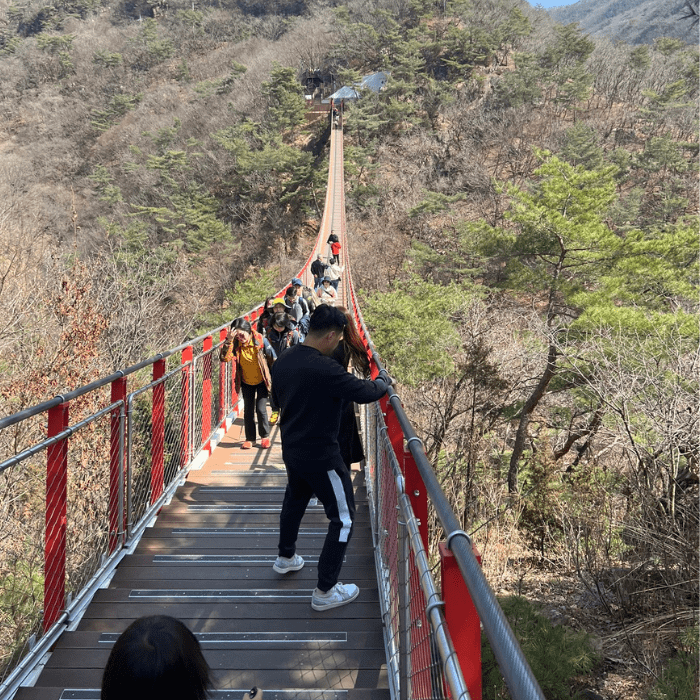
(Optional) Suspension Bridge
While it has nothing to do with the DMZ, many tours add an optional suspension bridge visit. The Gamaksan Red Suspension Bridge is the longest suspension bridge in Korea at 220m long and 1.5m wide. It is about a half hour drive from the DMZ area, but offers a nice place to stretch your legs. In my opinion this area can be skipped. If I were to do it again I don’t think I would need to visit this area.
What is the Best DMZ Tour
The DMZ is not an area that anyone can just visit alone, they must visit with a tour. There is no difficulty in finding a tour, but that does not mean they are all equal. While of course all tours visit the same areas in the DMZ, some are more personable. You face a pivotal decision: either join an extensive guided tour catering to approximately 50 individuals or indulge in a more intimate experience with a smaller private tour tailored for around 12 people.
The price difference when I was booking my tour was only $10 USD to go with a small tour, so that is the one I chose. I am so glad I did for a few reasons. While the pick-up was early in the morning we were one of the first groups to gain access to the DMZ for the day and I felt the experience was better. Secondly, our tour guide went out of his way to make sure we understood the history, and answer any questions we had.
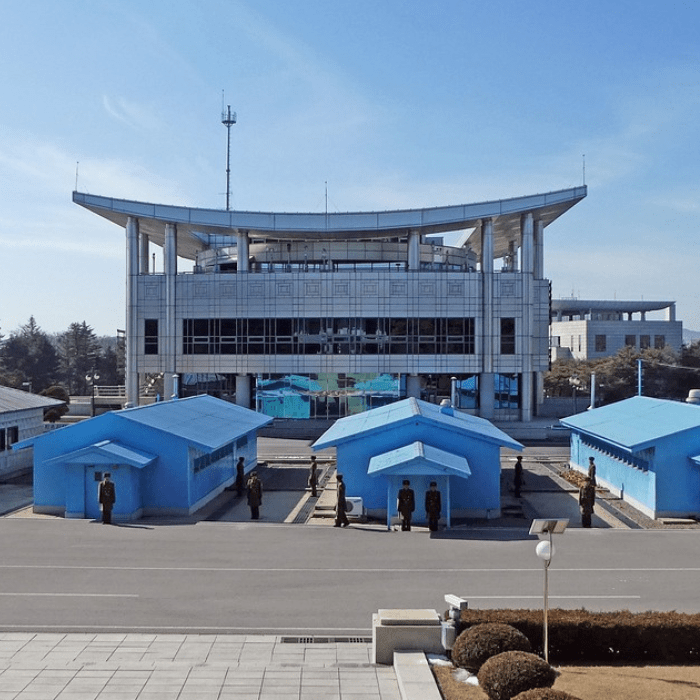
Differences Between the Visiting the DMZ and JSA
While visiting it is important to note that the DMZ and JSA are not the same tour. The JSA, which stands for Joint Security Area, is located within the DMZ. You might even recognize famous pictures of the blue houses with guards outside. This is the closest you can get to the border between North and South Korea.
This JSA is the area where negotiations take place between North and South Korea. If you take a JSA tour you will have the opportunity to go inside and see where these discussions occur. Time in the JSA is limited, usually only being allowed to be in the area for about 10 minutes.
Conclusion: Visiting the DMZ
Visiting the DMZ is not merely a journey through physical boundaries; it’s a journey through time, culture, and geopolitics. It’s an opportunity to bear witness to the scars of history while also glimpsing the resilience and optimism of the Korean people.
Have you visited the JSA or DMZ, if so what are your thoughts on it?


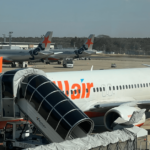
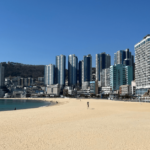
[…] Everything You Need to Know About Visiting the DMZ Korea […]
Hi Trevor,
I would like to ask regarding your post on “Everything You Need to Know About Visiting the DMZ Korea”
Did you join a tour with Klook? May I know what was the name of the tour? Would you know who was the operator?
There are just so many tour options available by different operators and with mixed reviews. I’m not sure which to choose 🙂
Thanks so much in advance!
Hi Jacq,
I used the following link to book my tour through Klook.
https://klook.tp.st/BgBnFLU6
There are many options, but honestly most of the tours are all the same. I tried to go with a smaller group as I felt it wouldn’t be as chaotic. However the government determines the amount of visitors per group so you will likely end up with a few combined groups. Hope that helps and enjoy your time in Korea.
Trevor
Understand. Thanks so much Trevor. Really appreciate your reply! 🙏🏻